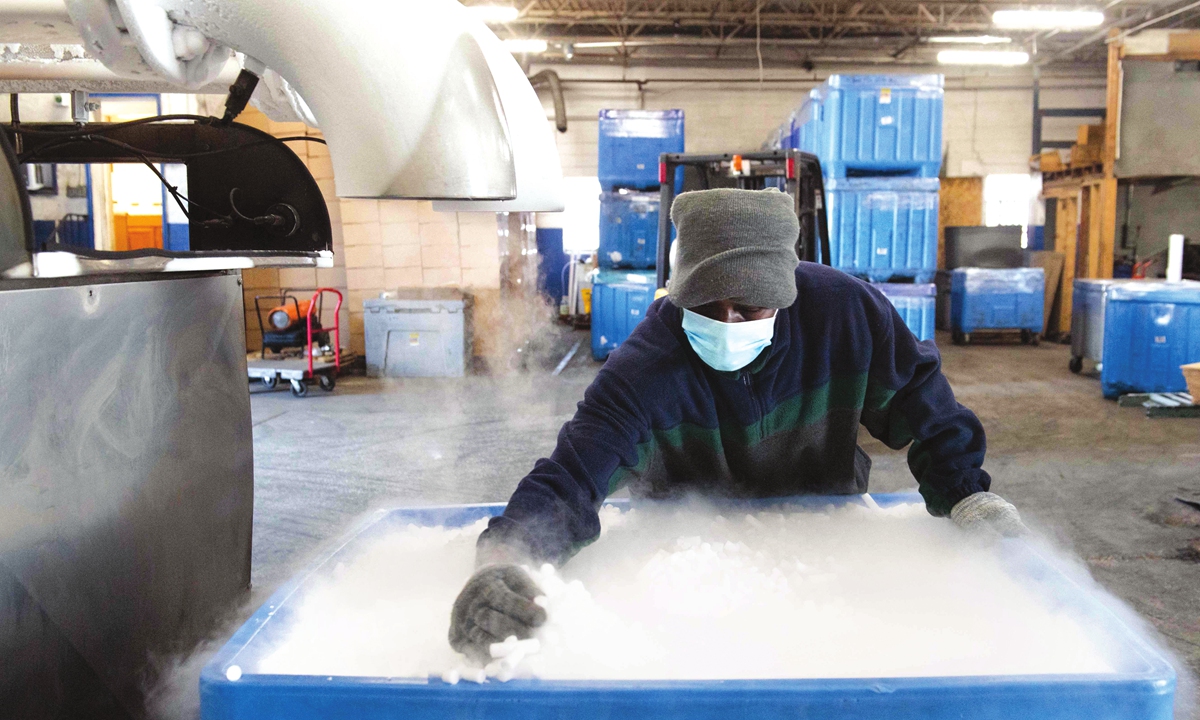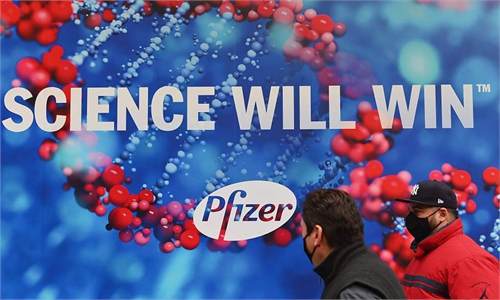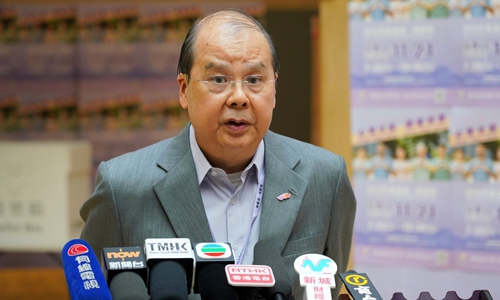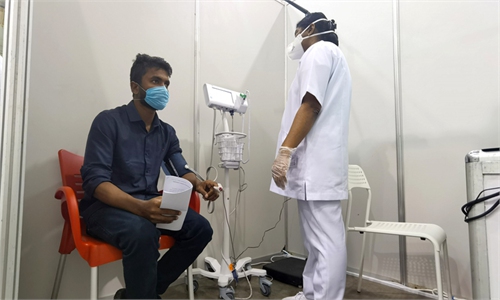SOURCE / INDUSTRIES
China's dry ice equipment sector in full swing to meet US COVID-19 vaccine transport needs
China’s dry ice equipment suppliers in full swing

An employee makes dry ice pellets at Capitol Carbonic, a dry ice factory, in Baltimore, Maryland, the US on November 20. Photo: VCG
As US President Donald Trump hailed the launch of COVID-19 vaccines, dry ice and its machine suppliers in China are working in full swing to respond to soaring demand for the cold chain, in which ice dry plays an indispensable part, with some companies' export orders to the US jumping by an unprecedented 10 to 20 times year-on-year.
Industry insiders predicted that the shortage of dry ice will be further worsened with the launch of more vaccines, and it may not be eased within half a year.
Pfizer's vaccine should be stored at -70 C, pushing up demand for dry ice, which has widely been used in the delivery of deep sea fish, beef and imported fruit - products that often have high requirements for transport temperatures.
Meanwhile, logistic disruptions due to the ongoing outbreak have caused a rising shortage of containers and jumping prices for air cargo, which have added pressure to the tightening supply of dry ice and the distribution of machines to make it.
In the past three months, Cold Jet, a US-based original equipment manufacturer of dry ice blasting equipment, has received huge orders that exceed its production capacity. The orders came after some global vaccine suppliers such as Pfizer in the US came to the company to place orders for both dry ice and related production machines, the Global Times learned.
The shortage of dry ice has been seen in both the US and Europe, and the company expects to deliver all the dry ice products to its US and European clients by February and March next year, Sun Gang, a manager with the Shanghai office of Cold Jet, told the Global Times on Sunday.
"The current problem is the extremely short delivery time. Normally, our production cycle for one piece of equipment is three or four months, but now it has been cut to two months, yet we still can't supply enough of it," said Sun, adding that this temporary surge in demand may last for half a year.
Meanwhile, Fengyun Industry, a dry ice production equipment supplier based in Shanghai, saw its exports to the US jump 10 to 20 times year-on-year, especially in the past two months, with around 10 dry ice-making devices exported to the US on a daily basis. Most of the orders are coming from dry ice plants across the US, which are using them for the transportation of COVID-19 vaccines, according to the company.
"Our machines can produce dry ice that enables the transport temperature to be held at around -78 C for a week, and with the carbon dioxide used to make the dry ice being rated at food additive standard," a manager surnamed Liu with Fengyun Industry told the Global Times on Sunday, adding that the company's production cost is only one-quarter of that of the US, which also gives it certain advantages in the market.
However, upstream raw materials may represent some constraints on production since chemical production capacity has been reduced, resulting in the reduction of carbon dioxide. This is a great limitation to the production of dry ice and drives up market prices, industry insiders said.
"The prices for dry ice and dry ice making equipment, which have already doubled this year due to the pandemic, will likely double again next year with the launch of more vaccines," added Liu.
In addition, a container shortage caused by the expanding trade surplus between China and places such as the US and Europe has aggravated the situation, as well as the difficulty in receiving CE markings for exports, so some suppliers are apt to look at opportunities in neighboring countries instead.
A manager surnamed Hou with Suzhou Kaishun Dry Ice Co told the Global Times that the demand for dry ice has soared, with an increase of 30-50 percent year-on-year since the outbreak began.
Although the demand is worldwide, Hou's company is mostly serving the domestic and neighboring markets, such as South Korea and Japan.
While the shortage prevails in the US, China may expect a limited impact, given the fact that there are tens of thousands of dry ice makers across the country and production capacity has reached a mature stage that enables an adequate supply at reasonable prices.
"Dry ice machines in China used to rely mainly on imports from the US, but with the industry's development and technological advances, most of the dry ice production equipment in the past two years has been made here and exported, with the price only one-quarter that of the US," said Liu.
Hou also said that the dry ice shortage has eased in China, and producers will be able to meet future orders.
Pfizer plans to offer up to 1.3 billion doses next year, while Moderna expects to produce up to 1 billion doses next year. Such large doses of the vaccines, coupled with the fact that most vaccines require at least two shots, would require an unprecedented amount of dry ice to be delivered, media reports said.
In the face of rising shortages, Pfizer is expanding its own dry ice production line.
Cold Jet will deliver the production equipment to Pfizer in three or four batches, with the first batch already delivered and in use.
Sun said that Pfizer will further expand its dry ice capacity in the line, where it plans to produce 100 tons of dry ice a day, compared with just a dozen tons now.
"Pfizer has ordered the equipment from us, but the schedule is tight," said Sun, noting that the company should be able to deliver all the equipment needed in March next year.



